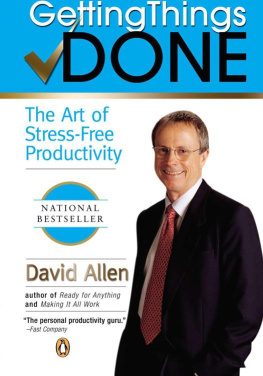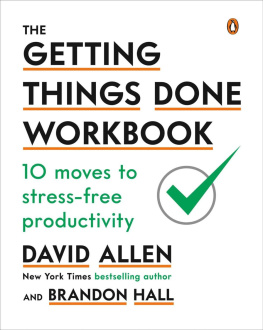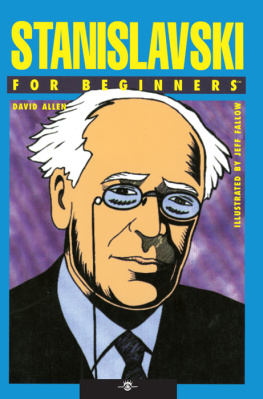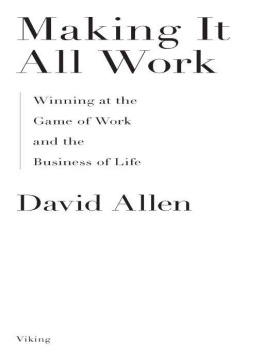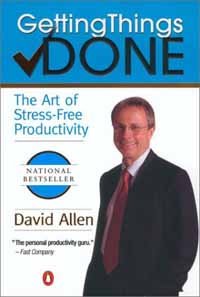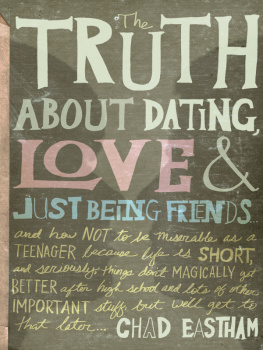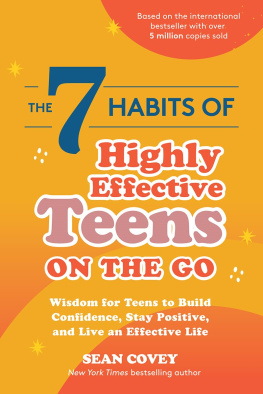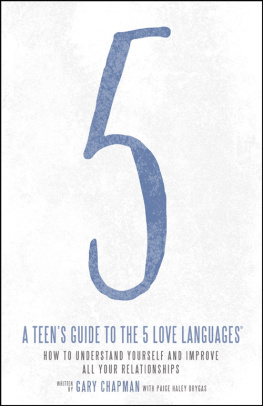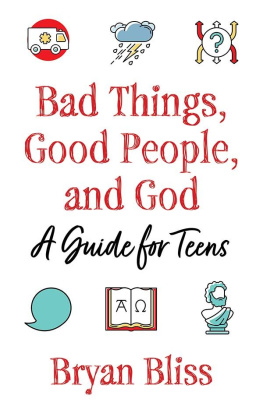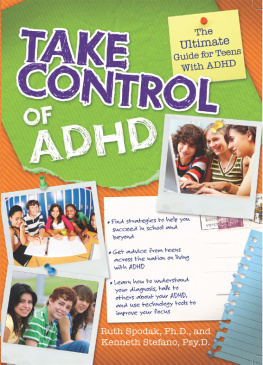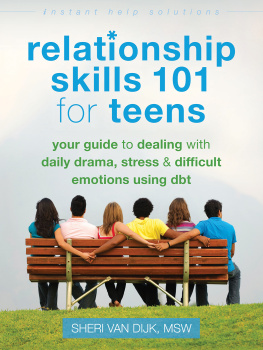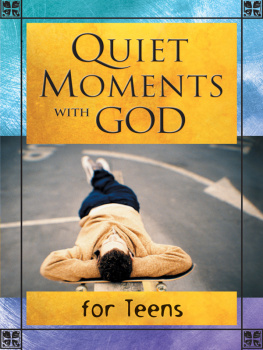GETTING THINGS DONE FOR TEENS
David Allen is an internationally best-selling author who is widely recognised as the worlds leading expert on personal and organisational productivity. Time magazine called his flagship book, Getting Things Done, the definitive business self-help book of the decade.
Mike Williams was president and CEO of the David Allen Company from 2011 to 2016, is on the board of directors for the Association for Talent Development (td.org), and is the Getting Things Done Enterprise Architect at Zappos.com
Mark Wallace has taught in public schools in Minnesota for more than twenty years and has won the TIES Distinguished Educator Award.

PIATKUS
First published in the US in 2018 by Penguin Books, an imprint of Penguin Random House LLC
First published in Great Britain in 2018 by Piatkus
Copyright Shane Snow 2018
The moral right of the author has been asserted.
All rights reserved.
No part of this publication may be reproduced, stored in a retrieval system, or transmitted in any form or by any means, without the prior permission in writing of the publisher, nor be otherwise circulated in any form of binding or cover other than that in which it is published and without a similar condition including this condition being imposed on the subsequent purchaser.
A CIP catalogue record for this book is available from the British Library.
ISBN 978-0-349-42140-7
Piatkus
An imprint of
Little, Brown Book Group
Carmelite House
50 Victoria Embankment
London EC4Y 0DZ
An Hachette UK Company
www.hachette.co.uk
www.improvementzone.co.uk
David Allen
For a new generation of young people, who will see problems as projects sooner than we did.
Mike Williams
For Arianna, Hannah and Conrad, you inspire me, encourage me and teach me. For caring adults everywhere looking to make a difference.
Mark Wallace
For my amazing wife, wonderful children, selfless family, supportive friends and everyone who has the courage to take the single next action.
Contents
For Additional Information
Visit gtdforteens.com for additional information, stories and resources.
Follow gtdforteens on Twitter, Instagram, Snapchat, Pinterest, Facebook and YouTube.
Tag us with #gtdforteens.
Acknowledgments
Wed like to thank the countless parents, teachers, counselors and clergy who, after experiencing the GTD methodology, have pleaded for something for our kids, wishing they had had it for themselves in their formative years. This has been a key factor in our motivation to craft Getting Things Done for Teens.
Mark and Mike would like to thank David Allen for inviting us to work on this project. Beyond inspiring us through the original Getting Things Done, your wisdom, guidance, sense of humour, love and generosity are humbling and inspiring.
We would like to thank Joe Beard and his team at Bionic Giant (bionicgiant.com) for their guidance and support on the illustrations as well as, most important, their desire to encourage this effort to improve the lives of teens around the world.
Wed like to thank Meg Edwards for her effort and support in the early days of this project. Her passion for helping kids and adults is eternal and inspiring. Specifically, her mastery of applying her knowledge of ADD and ADHD with GTD is innovative and has brought relief and joy to many adults and students. She is one of the best in the industry in this area. Thank you for sharing your passion, wisdom and expertise.
There are so many people who gave of their time and wisdom to help the evolution of this book. Wed like to thank Monica Russell, Lizzie Chapin, Ana Armstrong and Hannah Williams for their editorial suggestions. Wed like to thank Doe Coover for guiding us from the earliest stages of this project. Many thanks to Rick Kot and the team at Penguin for helping us get the book across the finish line and into the hands of teens and caring adults worldwide.
There is a whole host of people who touched this project and to whom we send our gratitude, and apologies to those many unnamed individuals who helped along the way (you know who you are). Special thanks to Annie Gott, Conrad Williams, Todd Wallace, Louis and Maxim Kim, Jeff Boliba, Deb Pekarek, Charles Fred, Tristan Zarate, Peter Hodne, Rooms 7&8, Maggie Weiss, Frank Sopper, the Mack family, Dan Roam, Jeff Irby, Amanda Doyle, Evan Taubenfeld, Kyle Steel, Krissee Chasseur, Jason Spafford and Kevin Brune.
Boy, I wish I had learned this in schoolit would have made such a difference!
How can I get this to my kids?!
Ive heard innumerable such exclamations over the past three decades, as Ive trained and coached people in the methodology now known around the world as GTD, described in my flagship book, Getting Things Done.
For those of you familiar with GTD, these sentiments probably resonate with you. If you are not aware of the method, this book will give you a great taster of the kinds of practices that we all should have learned in our early years but didnt. Its a simple but profound way to deal with the things that have our attention, so that we become the masters of them instead of their victims.
The desire for a method to deliver these practices to younger people, and as soon as possible, has been expressed to me often by parents, teachers, school administrators, clergy and counsellors people with caring roles in helping young people prepare themselves for their lives ahead.
I am not a parent, nor am I a teacher in the traditional education system. What I developed over these many years was a model of best practices that became the core of my profession, providing training and coaching, primarily in the corporate world. This was the population that was at the forefront of the bombardment of email, the internet and the ever-increasing disruptions of rapid change in that world, and they were hungry for help.
I knew from the beginning what I had uncovered was extremely useful for anyone with a creative and busy life, ranging from students and artists to stay-at-home parents. What I didnt know was how to reach that audience effectively, as I was trying to build my own career. And I certainly didnt know the best way to translate the methodology into an understandable and usable format for teenagers.
That said, I always had the sense that if my work was to have the long-term impact I thought it could, kids would be the answer. In order to have a sustainable experience of stress-free productivity, there are behavioural habits that most adults find challenging to change for instance, keeping track of every commitment, large and small, in a trusted external system instead of in their heads. This simple but powerful practice creates the ability to think optimally and focus creatively. Most adults wont do this, even when they know better. Ive seen it. Kids can get this quickly. Ive seen it.
Most adults think they know how to think. Kids are at a place where they can begin to learn.
How (and if) I could reach that younger audience was unknown to me, though it always remained on my Someday/Maybe list. My own wishful thinking in this regard started to morph into a real possibility with the emergence of two people in my world: Mike Williams and Mark Wallace.
I met Mike when I heard about his work at General Electric, successfully applying my methods in his role managing significant change there. I then discovered he had been blogging about his exploration in translating the GTD method, with success, for his own kids! We stayed in touch, and Mike eventually came on board with me professionally in our company. (People on my staff who had met him said, I want Mike as my dad!) We agreed that it might be time to at last write this book, and I knew he was the guy who could do the heavy lifting for that.


